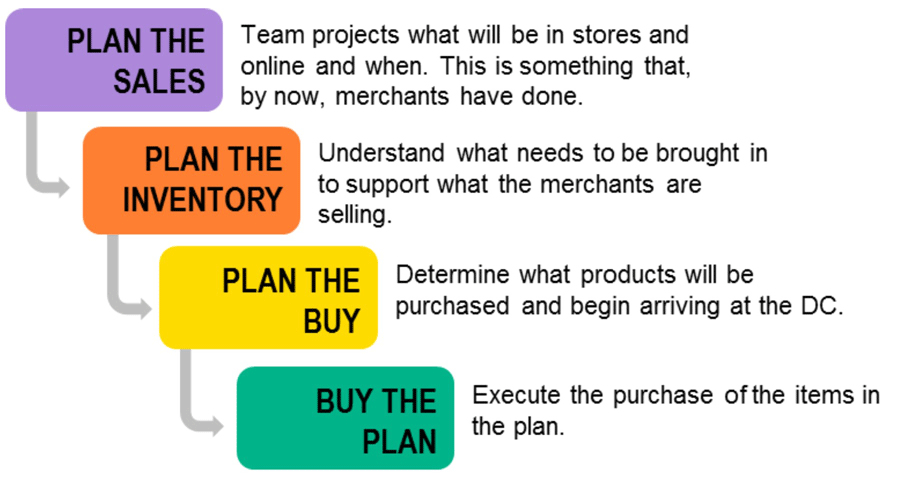By most measures, the 2015 holiday season was one many retailers would like to forget. In addition to experiencing underwhelming sales, retailers struggled to accommodate the massive surge in online shopping that saw, for the first time, more U.S. shoppers buying online than in stores on the Thanksgiving and Black Friday weekend. The result were frequent out-of-stocks, late deliveries of online orders—and many unhappy customers.
With the 2016 holiday season only five months away, it’s a good time for retailers to think about what they can do to avoid a repeat of 2015. One of the most effective tools for improving distribution performance during the holidays—especially in a multichannel environment—is a “retail version” of sales and operations planning (S&OP).
Collaborating via S&OP
S&OP is a process that helps foster focus, alignment and synchronization among a company’s leadership team to more effectively match supply and demand. It historically has been most commonly used by manufacturers. However, with their shipping demands growing more complex due to the popularity of online shopping, many retailers are realizing S&OP’s benefits.
In a retail setting, S&OP gets key merchants and supply chain decision makers together on a formal basis to collaboratively determine how best to meet the one- to two-month surge in demand that accompanies the holiday season. Using a simple model, such as the one in Figure 1, the combined team can better understand where they expect the peaks and valleys of demand and how the company will respond.
Figure 1: A simple model for a retail version of S&OP
Of course, S&OP is not a crystal ball. Demand will lag for some items and exceed estimates for others. Promotions will be offered, generating spikes in demand. To help deal with this uncertainty, the team can look to the previous year as a guide. An analysis of past seasons could indicate that certain factors typically resulted in a specific promotion and accompanying spike in demand. This insight can help the supply chain team understand how the merchants are thinking about demand so they can ensure the supply chain can be responsive to those changes. For instance, the supply chain team might create new, temporary fulfillment nodes to flex capacity, increase speed, and reduce delivery costs.
In essence, S&OP helps the merchants and supply chain professionals create a basic “playbook” for the season. This playbook lays out a variety of demand scenarios and actions merchants could take, and the corresponding potential moves the supply chain would need to make to support those actions. Thus, during the season, when a merchant calls a specific “play”—e.g., a promotion on a slow-selling item or a chase order for more of a hot product—the supply chain isn’t caught off guard and forced to scramble to respond. It already knows what’s coming and what, in turn, it will do.
Importantly, with S&OP, communication goes both ways. True, the merchants must keep the supply chain informed of their thinking. But the supply chain team also must be upfront about what’s operationally possible and reasonable. They need to be able to say to a merchant, “We’ve deeply analyzed the situation, and if you take this action, we know what will happen from a supply chain perspective, and we’re going to have a bunch of angry customers.” From there, the merchants and supply chain team can jointly come up with the best solution.
Here’s how one company, a multi-billion dollar, global fashion retailer, used S&OP to its advantage. Several years ago, during an enterprise-wide systems upgrade, the company implemented tools to monitor and manage the flow of product through the distribution network. Beyond the tools, the company put in place a complete solution—encompassing people, process and technology—that became known as “Flow Planning.” Flow Planning became a critical, in-line planning function that optimized inventory flow through the network, subject to each store’s service requirements. Essentially, it dynamically solved the problem of “pushing the pig through the python”—managing the bubble of product flow in an efficient and effective way to ensure product availability.
The S&OP dimension of this retailer’s solution is the ongoing dialogue between merchandise planning and allocation and the flow planning teams, which is backed up by fact-based analysis. This is especially critical in handling fractional or digital demand—i.e., items that sell fewer than one unit per week, such as fringe sizes or items in uncommon combinations of style, size and color. Because the two teams continually and formally keep each other in tune with what they’re doing, the retailer can more effectively meet demand across its entire supply chain, regardless of where that demand comes from.
Avoiding the Ghosts of Christmas 2015
The retail world certainly has become much more complex, especially as customers increasingly demand multichannel access to their favorite goods. The challenges are only magnified during the holiday season, which has expanded from a few weeks to several months during which consumer expectations are higher and retailers really need to be on their toes.
Using S&OP, retailers can ensure its supply chain is up to the task, avoid the missteps that disappointed many customers last year, and in general boost its margins. That will translate into a happy holiday season indeed for everyone.
David DuBose is the Director of Supply Chain Solutions for Sedlak Management Consultants
